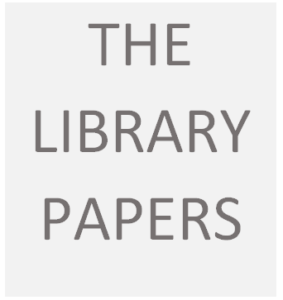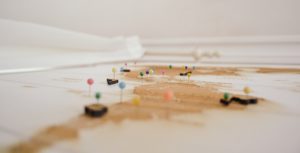1.4 Mapping Literacies Onto Learning
The previous two Learning Curations demonstrated how multi-modal texts could be incorporated into a themed unit: in Part 2, students were asked to investigate and reflect critically on the genre of memoir presented via a variety of media, and in Part 3 to create their own memoir by choosing from among a variety of media, and then to reflect critically on the process of creation.
The focus of Parts 2 and 3 was deliberately narrowed to a single topic in each—critical analysis of the genre of memoir across multi-modal formats in Part 2, and critical analysis of presentation formats in Part 3—but these activities actually require students, teacher and librarian to use multiple strategies to comprehend and create the materials. In this Learning Curation, I want to widen the focus to discuss those strategies in more detail.
The strategies I want to consider are for multi-media literacy instruction as it is applied to learning technologies by means of collaboration between the classroom teacher and the teacher librarian.
This Learning Curation is divided into three sections: Section 1 focuses on the various types of literacies and links to related resources; Section 2 explains how the librarian can support teachers and students in the library; Section 3 looks at a variety of Web tools and learning technologies that teachers can incorporate into their instructional designs with a view to adding literacy instruction.
1.4.1 Literacies for the 21st Century
Multi-Media, Multi-Modal, ‘Multiliteracies’
Literacy used to mean “the ability to read and write (and do basic arithmetic—aka ‘numeracy’) at a basic level of competence.” But in order to be considered competent today, students need skills that go well beyond traditional reading and writing. Now we expect them to be active producers of communication, as opposed to consumers who simply read and make notes. They need to know how to use word-processing programs and spreadsheets; they also often need to know how create and edit video and still photos, record and edit sound, how to set up a website or blog, how to navigate a social media site; more and more they are expected to work collaboratively or as part of a team to create projects; as of 2016 they are also expected to know how to write computer code; and increasingly we want them to know how to create circuits and make other computer-related hardware; it’s quite possible that in future we will want them to understand how to build and repair digital devices as well. Furthermore, in a time when anyone with access to an internet connection can become a producer of knowledge, the traditional authority of the school and the teacher as the sources of knowledge is challenged. It is important to remember that the educator’s role is no longer to impart knowledge (as it was in the past), but to facilitate the processes of inquiry for learners.
Now any approach to literacy instruction needs to include, yes, the traditional categories of basic or ‘information’ literacy, and of ‘critical literacy’ (which requires reflection about rather than simple consumption of information), but given the new focus on production, it also now includes the category of procedural knowledge—how to use software programs, how to write code, how to build circuit boards etc; and given the possibilities and need for working with others, the skill to collaborate in groups and teams, to practice good digital citizenship and to be safe while online–this could be called ‘participatory skills.’ Taken together, these different categories of literacy can be called ‘multiliteracies.’
1.4.2: The Teacher-Librarian in the 21st Century
Given the proliferating potentials for communication, the expanding definitions of literacy, the blurring boundaries between consumption and production of communications, and the emerging possibilities for collaboration, it follows that the role of libraries and librarians is also evolving. School libraries are reinventing themselves as Learning Commons, to indicate that they offer access to more resources than just traditional language and print-based materials, to more techniques than just traditional reading and writing, and to more diverse learners and groups of learners. More recently, in response to expanding opportunities for production offered by new media, libraries have even begun incorporating so-called ‘makerspaces’ into their functions.
“Where students need the teacher librarian the most is to help them:
- to think critically and to let them know when they are thinking critically;
- to articulate and justify their use of digital information (Why did you include this?, What message are you trying to convey? Who is your audience? Why did you choose this tool?);
- to model and scaffold the ethical use of information and behaviour in digital environments;
- to provide discussion around students’ digital identities and provide opportunity to develop those identities.
(from course material for Module 6: Supporting Learners through the Library: Digital and Media Literacy LLED 462, J. Delvecchio)
1.4.3: Learning Technologies in the 21st Century
Well-chosen technological tools enhance creativity and effectiveness. They give students the opportunity to demonstrate their thinking, to construct knowledge and even to develop products and processes.










